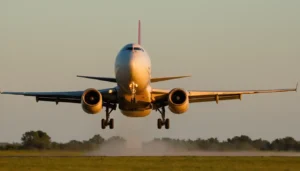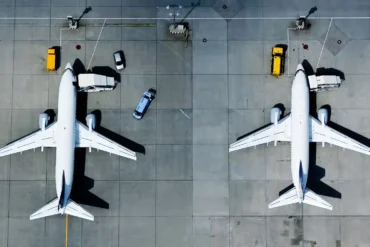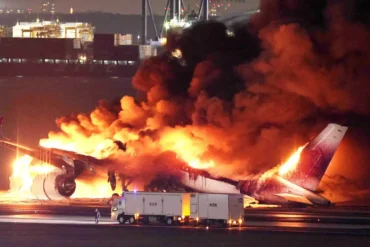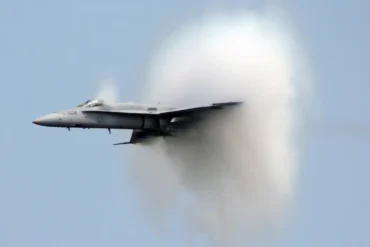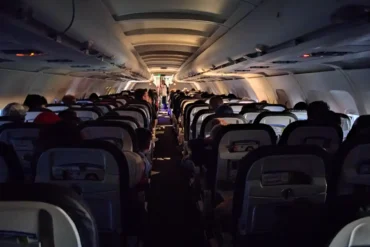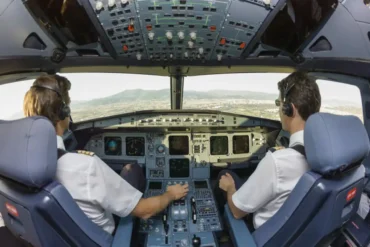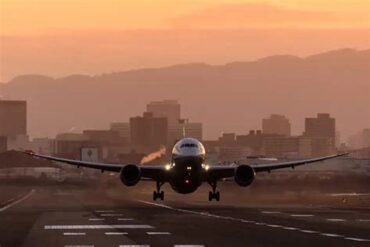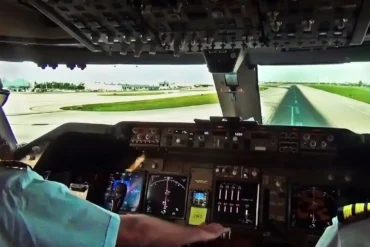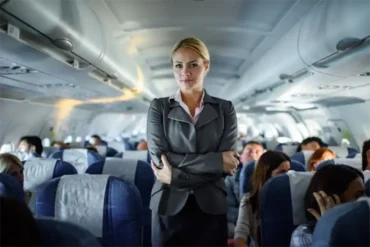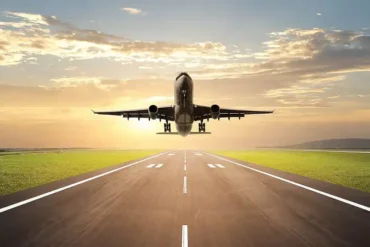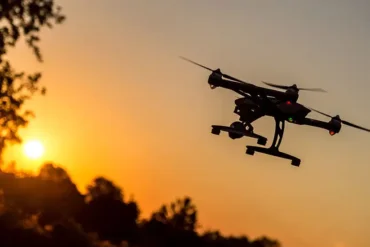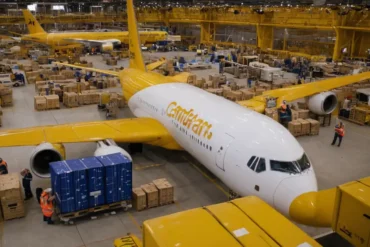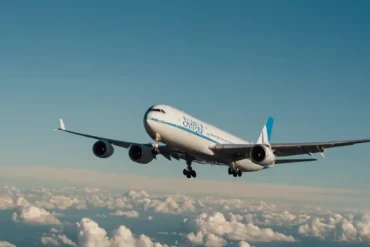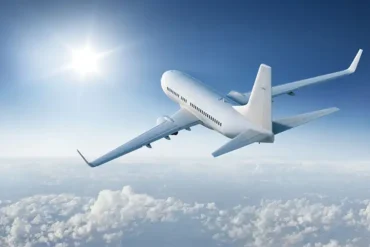Ever wondered how planes get off the ground and into the sky? Let’s explore the fascinating physics behind aircraft takeoff speeds!
Since the Wright brothers’ first flight in 1903, air travel has taken off globally. But how fast does a plane need to go to take off? The short answer is that most airliners require speeds from around 130 to 180 mph before their wings create enough lift for takeoff.
There are a few forces at play during takeoff that make it all possible. Lift, weight, thrust and drag – the fab four of flight!
Lift, Weight, Thrust and Drag
Lift acts against the aircraft’s weight, allowing it to climb skyward. Lift happens when the wings move through the air and create differences in air pressure. More lift means smoother takeoffs.
The aircraft’s weight pulls it down by gravity, resisting the lift. To take off, the lift has to be strong enough to overcome the weight.
Thrust propels the aircraft forward, produced by the engines. For takeoff, the thrust must be greater than the drag slowing the aircraft down. Understanding these forces is key to calculating the right takeoff speed.
Drag is the resistance that slows the aircraft as it moves through the air. It’s caused by friction between the aircraft and air molecules. Thrust has to overcome drag for the aircraft to accelerate down the runway.
Critical Takeoff Speeds
Certain speeds are essential for the aircraft to conquer the different forces during takeoff. These are the rotation speed, lift-off speed, and climb speed.
The rotation speed is the minimum speed where the pilot pulls back on the controls, lifting the nose off the ground. Factors like aircraft weight, runway length and center of gravity affect this speed.
The lift-off speed is the slowest speed that produces enough lift for the aircraft to become airborne. Elements like weight, wing design and runway surface play a role here.
The climb speed is the velocity at which the aircraft climbs after takeoff. Weight, engine power and aerodynamics impact the climb speed.
Importantly, these speeds vary based on the aircraft, weather and other factors. Pilots use calculations and charts to determine the optimal takeoff speeds.
For more on the physics of takeoff forces, check out NASA’s website – they have great explanations and diagrams!
What Influences Takeoff Speeds?
Takeoff speed depends on several key factors that enable a safe and successful departure:
Aircraft Weight and Flap Settings
A major influence on speed is the aircraft’s weight – heavier planes need more speed to take off. Flap settings on the wings are also key.
Flaps increase lift so the aircraft can take off at lower speeds. Pilots set the flaps based on weight and other considerations, optimizing efficiency.
Runway Length, Surface and Conditions
Runway features significantly impact speeds. Longer runways provide more distance to accelerate.
The surface material – concrete or asphalt – affects tire friction and speed. Runway slope also plays a role in takeoff performance.
Weather elements like wind further shape the intricacies of required takeoff speed.
Air Density and Temperature
Air density and temperature directly affect aircraft performance during takeoff. Denser air means more lift, allowing lower takeoff speeds.
Less dense air at higher temperatures requires faster takeoff speeds to generate enough lift.
Jet Propulsion Ushers in Higher Speeds
The introduction of jet engines marked a major milestone in aviation, enabling faster acceleration and higher takeoff speeds.
Jet Propulsion Takes Off
With far greater thrust than propellers, jet engines allowed planes to reach much higher speeds during takeoff.
Swept-wing designs further enhanced aerodynamics, decreasing takeoff distances and enabling even faster takeoff speeds.
Today, large commercial jets like the Boeing 747 and Airbus A380 take off at around 150 to 180 mph. Their size and weight demand these swift speeds to generate sufficient lift.
Advanced Materials and Digital Controls
New materials and computerized controls have also advanced takeoff capabilities. Lightweight carbon composites reduce aircraft weight, permitting quicker acceleration and lower speeds.
Digital flight systems give pilots real-time data to fine-tune takeoff speeds based on weight, runway length and conditions for optimal safety and efficiency.
FAA Guidelines and Calculations
To ensure safe takeoffs, the Federal Aviation Administration (FAA) provides minimum speed regulations tailored to different aircraft. Factors like weight, runway size and environment impact the requirements.
FAA calculations account for aircraft weight, wingspan, engine power, runway details and more. Requirements evolve alongside aviation technology and safety. Following FAA guidance allows pilots to calculate and achieve the ideal takeoff speed.
Takeoff Charts and V-Speeds
Pilots use takeoff performance charts and V-speeds (velocity speeds) to pinpoint the proper speed for given conditions. The charts provide runway length, aircraft weight and speeds based on elements like temperature, altitude and wind.
V-speeds are pre-set speed benchmarks used in all flight phases. V1 is takeoff decision speed, Vr is rotation speed, and V2 is minimum climb speed after takeoff. These tools help pilots determine precise takeoff speeds for a safe and efficient departure.
Real-World Case Studies
Looking at actual incidents underscores the critical need to calculate and follow proper takeoff speeds. The 1977 Tenerife airport disaster occurred when two 747s collided during takeoff due to inadequate spacing and improper procedures.
The aviation industry analyzes real cases to identify risks and refine protocols, upholding the highest safety standards. For an in-depth look at takeoff regulations and performance calculations, check out the FAA’s site at faa.gov.
Conclusion
We’ve explored the intricate physics of how aircraft transition from ground to sky through acceleration and lift generation. While early planes flew at 40-60 mph, today’s aircraft need double or triple those speeds for takeoff. Thanks to innovations like jets, composites and digital controls, the key principles of flight established by Daniel Bernoulli still enable the majestic ascent of aircraft over 120 years after the Wright brothers’ pioneering 12-second, 120-foot flight.
